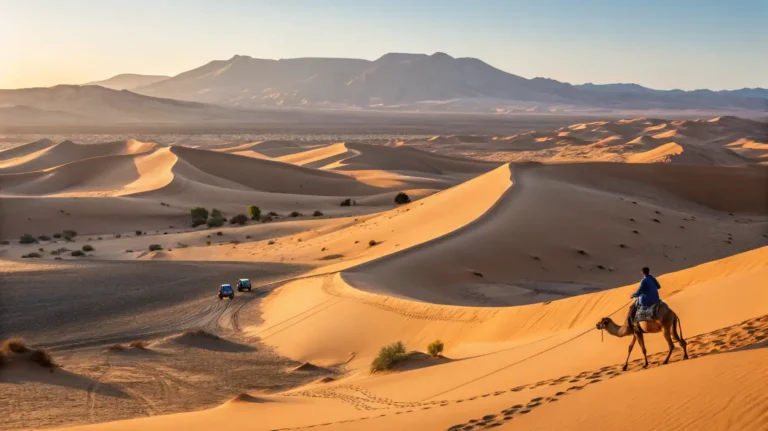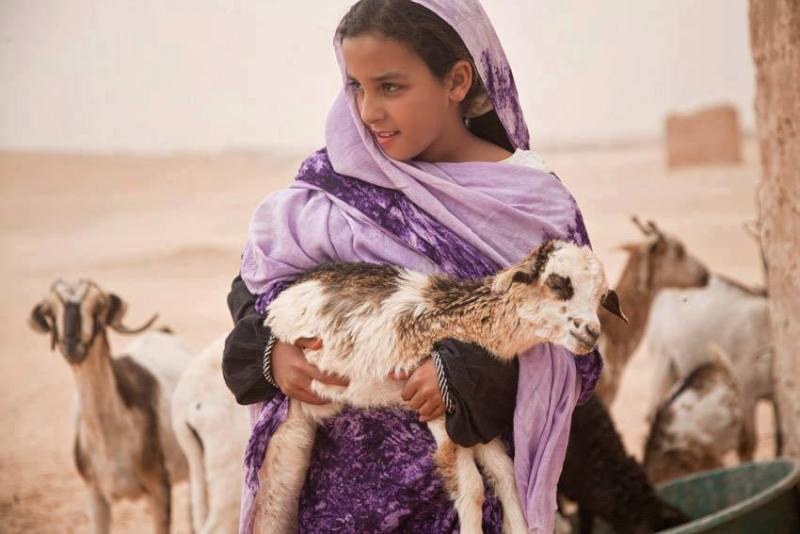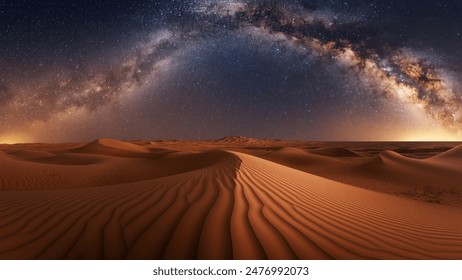Under the Saharan Stars: A Moroccan-American Astrophysicist's Journey Home

For most of my life, the glow of New York City has been the backdrop to my work. As an astrophysicist, I’ve spent countless nights observing the cosmos through powerful telescopes, analyzing data, and theorizing about the universe. But lately, I felt a disconnect. The city’s relentless light pollution was not only hindering my observations but also dimming a part of myself, a part connected to my Moroccan roots. I needed to escape, to reconnect with the stars in their purest form, and to rediscover a heritage I hadn’t fully embraced. That's why I found myself booking a flight to Morocco, seeking out the heart of the Sahara Desert near Merzouga. I had booked a stay at a traditional Berber tent (airbnb.com/sahara-merzouga-tent) hoping for an authentic cultural experience and some time for deep desert photography.
Arrival in Merzouga: A Sensory Awakening
The transition from the bustling city to the serene desert was jarring, yet deeply comforting. After a long drive from Marrakech, I arrived near Merzouga. Stepping out of the vehicle, the first thing I noticed was the absolute silence, a stark contrast to the constant hum of New York. Then came the textures: the fine, cool sand crunching under my boots. The air carried the scent of woodsmoke, a promise of warmth and stories, mingled with the refreshing aroma of mint tea. As I was led to my Berber tent, I was greeted by a symphony of colors. The handwoven carpets, laid out before me, were a vibrant tapestry of reds, oranges, and blues – a visual feast that seemed to mirror the complexity of the night sky I was so eager to see. Inside the tent, Berber music played on a gimbri (a three-stringed lute), its melancholic melody adding to the magical ambiance.
The tent itself was a marvel. Handwoven carpets covered the sand floor, providing a soft surface for the low tables and plump cushions arranged around the perimeter. Solar lanterns cast a warm glow, providing a welcome alternative to harsh electric light. And, of course, there was the opening in the roof, strategically placed to offer an unobstructed view of the heavens. There was no denying it, I was eager to start my desert photography endeavors.
Immersing Myself in Berber Culture
My days in the Sahara were a lesson in slowing down, in appreciating the simple things, and in connecting with a culture rich in tradition and hospitality. I spent hours learning about Berber culture, a world far removed from my life in New York. Fatima, a Berber woman with eyes as deep and knowing as the desert night, patiently taught me the art of making tagine, a slow-cooked stew that's a staple of Moroccan cuisine. I learned to layer the vegetables and spices just so, to coax out the flavors that only time and patience can unlock.

Hassan, a local artisan, shared the intricate details of Berber carpet weaving. Each knot, each pattern, told a story – a story of lineage, of tradition, of the desert itself. I learned about the natural dyes used to create the vibrant colors, the symbolism embedded in the designs, and the immense skill required to create these works of art. Purchasing souvenirs directly from artisans like Hassan helps support the local Berber communities and promotes sustainable tourism in the Sahara Desert.
But perhaps the most profound moments were those spent around the crackling fire in the evenings. The host family, whose warmth and hospitality knew no bounds, shared stories of their ancestors, of their nomadic past, and of their deep connection to the land. It was during these conversations that I began to understand the true meaning of Berber culture and the importance of preserving it.
Battles and Beauty: Astrophotography in the Sahara
Of course, the primary reason for my journey was to capture the breathtaking night sky over the Sahara Desert. I had brought my trusted Celestron NexStar 8SE telescope, my Sony a7S III camera (renowned for its low-light capabilities), and a star tracker to compensate for the Earth’s rotation. I was ready for some serious astrophotography. But the Sahara, as beautiful as it is, presents unique challenges. Sandstorms, even minor ones, can quickly obscure the sky, turning a crystal-clear night into a hazy disappointment. The temperature fluctuations between day and night are dramatic, requiring constant adjustments to my equipment and my own comfort. And simply carrying my gear across the dunes was a physical exertion in itself.

I spent hours experimenting with different settings, battling the elements, and cursing the occasional cloud that dared to drift across my field of view. One night, I was determined to capture the Milky Way in all its glory. After hours of adjustments, I finally found the sweet spot: ISO 6400, f/2.8, and a 30-second exposure. The resulting image was breathtaking. The Milky Way stretched across the sky like a river of light, its billions of stars shimmering against the inky blackness. I also targeted specific constellations, such as Orion and Scorpius, marveling at their clarity and brilliance in the absence of light pollution. The Sahara truly offered the best stargazing I had ever experienced.
The frustration was real, but the satisfaction of capturing a clear image, of revealing the hidden wonders of the universe, was immense. But beyond the technical aspects, something more profound was happening. As I stood there, surrounded by the vastness of the desert and the infinite expanse of the cosmos, I felt a deep connection, a sense of belonging that transcended my scientific understanding. The stars my ancestors used to navigate the desert were the same stars I study from a scientific perspective. It was a humbling realization, a reminder that we are all part of something much larger than ourselves. This cultural immersion helped me appreciate both the scientific and spiritual aspects of the stars.
Responsible Desert Tourism: Preserving the Magic
My experience in the Sahara also underscored the importance of responsible desert tourism. The increasing popularity of Merzouga as a tourist destination has brought economic benefits to the local Berber communities, but it has also created environmental challenges. It's crucial that we, as visitors, are mindful of our impact and strive to support sustainable practices. Look for eco-lodges that minimize their environmental footprint and Berber-owned businesses that directly benefit the local economy.
It’s essential to respect Berber customs and traditions. Learn a few basic phrases in Berber, dress modestly, and be mindful of local customs. Support Berber-owned businesses by booking tours with local guides, purchasing handcrafted souvenirs directly from artisans, and choosing accommodations that prioritize sustainability. By being conscious travelers, we can help ensure that the Sahara's beauty and Berber culture are preserved for generations to come.
A Call to Action: Experience the Sahara Responsibly
My journey under the Saharan stars was more than just an astrophotography expedition; it was a journey of self-discovery, a reconnection with my roots, and a reminder of the importance of responsible travel. The Sahara Desert is a magical place, and the Berber culture is a treasure to be cherished. If you're considering a visit to Morocco, I urge you to experience the Sahara responsibly. Support Berber-owned businesses, respect local customs, and choose accommodations that prioritize sustainability. Let's work together to preserve the beauty of the desert and the richness of its culture for future generations.

Consider booking tours with local guides who can provide insights into the history, culture, and ecology of the Sahara. Purchase handcrafted souvenirs directly from artisans to support their livelihoods and preserve traditional crafts. When searching for accommodations, prioritize eco-lodges and Berber tents that have implemented sustainable practices. Look for certifications or initiatives that demonstrate a commitment to environmental conservation and community development. By taking these simple steps, you can ensure that your visit to the Sahara is both enriching and responsible, contributing to the well-being of the local communities and the preservation of this incredible landscape.